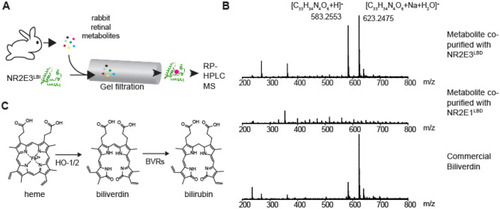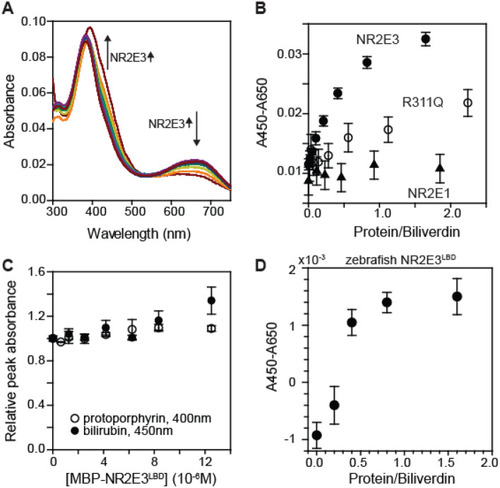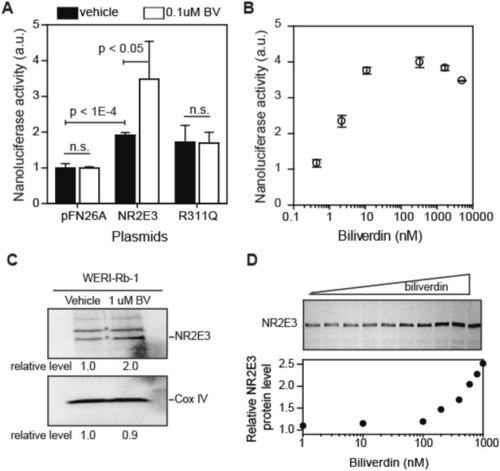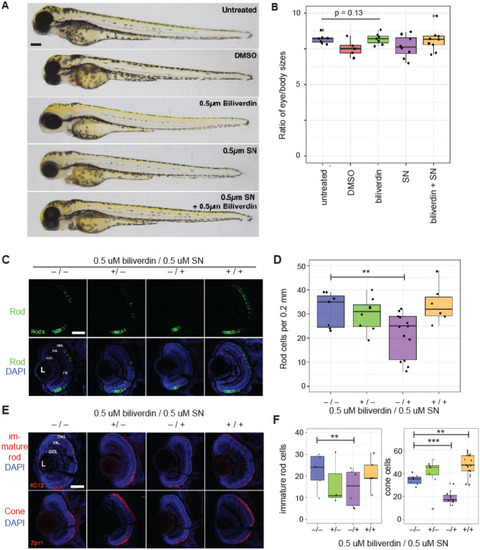- Title
-
Biliverdin regulates NR2E3 and zebrafish retinal photoreceptor development
- Authors
- Connor, B., Titialii-Torres, K., Rockenhaus, A.E., Passamonte, S., Morris, A.C., Lee, Y.S.
- Source
- Full text @ Sci. Rep.
|
Identification of biliverdin as a potential NR2E3LBD ligand. ( |
|
Biliverdin specifically binds to MBP-NR2E3LBD in vitro. ( |
|
Biliverdin regulates NR2E3 in cells. ( |
|
Biliverdin contributes to retinal development in zebrafish larvae. ( EXPRESSION / LABELING:
PHENOTYPE:
|




